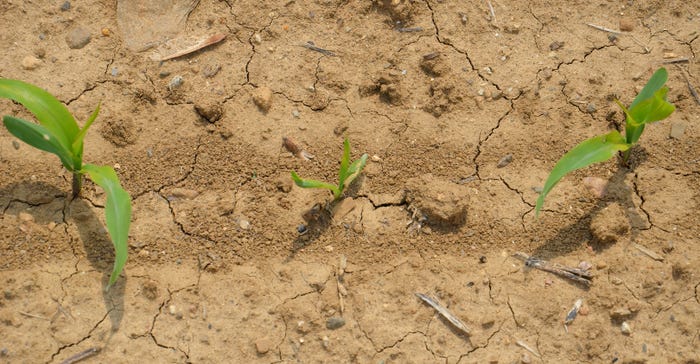
One farmer reports that he planted his first field of corn on April 10 and his last field in the first days of June. Weather was responsible for the gap in between, and the weather from here on out will play a big role in what all farmers find in their cornfields.
If you take to the field today, depending on when you planted, you’re going to find a variety of growth stages and situations — from corn with the growing point still below the ground to corn approaching waist-high. Here are a few things to watch for as you scout your fields over the next week to two weeks:
Signs of soil compaction. Compaction was a cost of doing business for most, since the alternative might have been leaving the corn in the sack. But by now, corn that had trouble getting out of the ground, or that perhaps was planted on the wrong day, just before a hard rain, may be exhibiting some signs of distress.
Gary Steinhardt, a Purdue University Extension soils specialist, says if conditions continue to be on the wet side, that compaction may not wind up costing much this year in terms of yield. If it turns off dry, compaction could be a yield-limiting factor.
Nitrogen loss. Corn that is running out of nitrogen or is waterlogged will show yellowing early in the season. This may be because the soil is actually low on nitrogen, either because you haven’t made the application yet or because there was higher-than-usual nitrogen loss; or it may be because water-logged soils are preventing plants from accessing nitrogen that is present.
Missing plants or uneven spacing. If you planted into tough conditions, missing plants may not be a planter problem. Insects could have picked off some plants. If you find an uneven spacing pattern, however, that may be planter-related. Early season is a good time to do stand counts and assess planter performance. Later in the season, you may not be able to determine what caused missing plants.
Check out the slideshow to see photos of these and other potential situations.
About the Author(s)
You May Also Like




